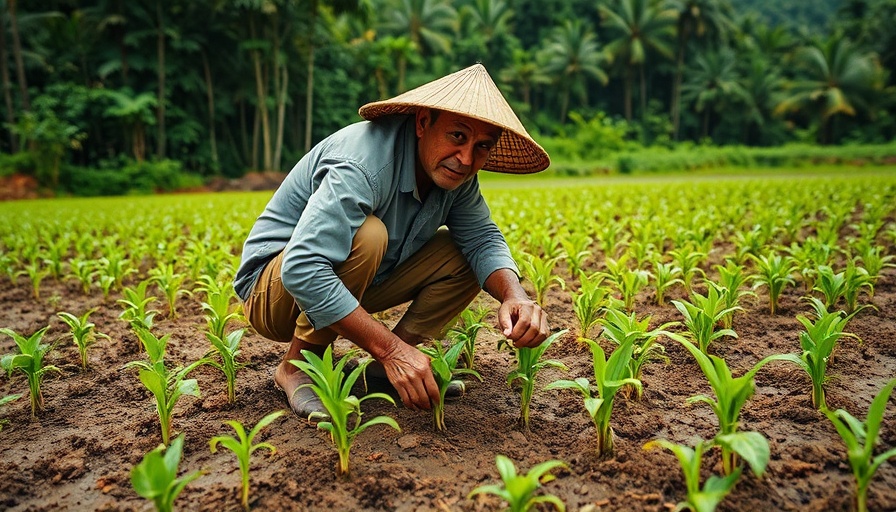
Flood Risks in Focus: Understanding Indonesia's Peatlands
As climate change amplifies environmental issues worldwide, Indonesia’s peatlands are emerging as a critical area of concern. Together, this biodiverse ecosystem, spanning approximately 24 million hectares (59 million acres), is highly susceptible to flooding, especially given that nearly 50% have already been compromised due to degradation from industrial exploitation. Alarmingly, a report from the peatland monitoring group Pantau Gambut reveals that 6 million hectares of peatland are at severe risk, a figure that is twice the size of Belgium.
Peatlands and Their Role in Climate Resilience
Peatlands serve as natural reservoirs, capable of storing vast quantities of water—up to an astonishing 1,300% of their dry weight. This innate ability allows them to act as critical buffers against flooding. However, once damaged by activities such as logging and land-clearing for agriculture, these ecosystems lose their functionality, leading to increased water run-off and ultimately flooding. Wahyu Perdana from Pantau Gambut elucidates this, claiming that current flooding is a consequence not of natural cycles but of human mismanagement.
Compounding Issues: Subsidence and Fire
In addition to their degradation, peatlands face the scourge of subsidence. This phenomenon, which refers to the sinking of land due to the compaction of dried peat, is exacerbated by the construction of drainage systems intended for agriculture. Kitso Kusin, a researcher at the University of Palangka Raya in Central Kalimantan, confirms that drained peatlands are not only more susceptible to flooding but also create a highly flammable layer, fuelling destructive fires that worsen drought conditions in adjacent areas.
The Environmental Cost of Commercial Exploitation
Despite ongoing conservation efforts, the trend of deforestation in Indonesia’s peatlands continues. Approximately 50,000 hectares (123,500 acres) fall victim to commercial exploitation every year. This rapid loss threatens the vibrancy of unique ecosystems that encompass both carbon reserves and biodiversity. Pantau Gambut notes that 33% of major peat hydrological units exist within industrial concessions, indicating a direct link between industrial activity and dwindling peatland health.
Looking Ahead: Sustainable Practices Are Vital
Understanding the importance of Indonesia's peatlands enhances awareness about sustainable living. The degradation of these critical zones not only impacts local biodiversity but can also accelerate climate change through increased carbon emissions. The good news is that implementing sustainable agriculture practices—such as organic products and responsible land management—can help restore peatlands and mitigate these impacts.
Community Engagement and Educational Outreach
On the ground, the impact of peatland degradation affects some of the most vulnerable communities. Educational initiatives targeting local populations about the importance of these ecosystems, coupled with actionable environmental conservation practices, are essential. Community gardens and zero waste programs foster a strong network of sustainability practices, reinforcing environmental stewardship that can lead to meaningful change.
Conclusion: Take Action for a Sustainable Future
The findings on Indonesia’s peatlands serve as a clarion call for action amongst eco-friendly readers. From practicing responsible consumption to engaging in environmental policies that protect such ecosystems, every individual can contribute to a sustainable future. It’s time to integrate our values into our actions, driving a change toward sustainable solutions that ensure the preservation of these critical environments.
Join in the conversation on sustainable development and contribute to environmental initiatives in your community. Power your choices with the knowledge of how they affect our planet while championing eco-friendly practices.
 Add Row
Add Row  Add
Add 



Write A Comment